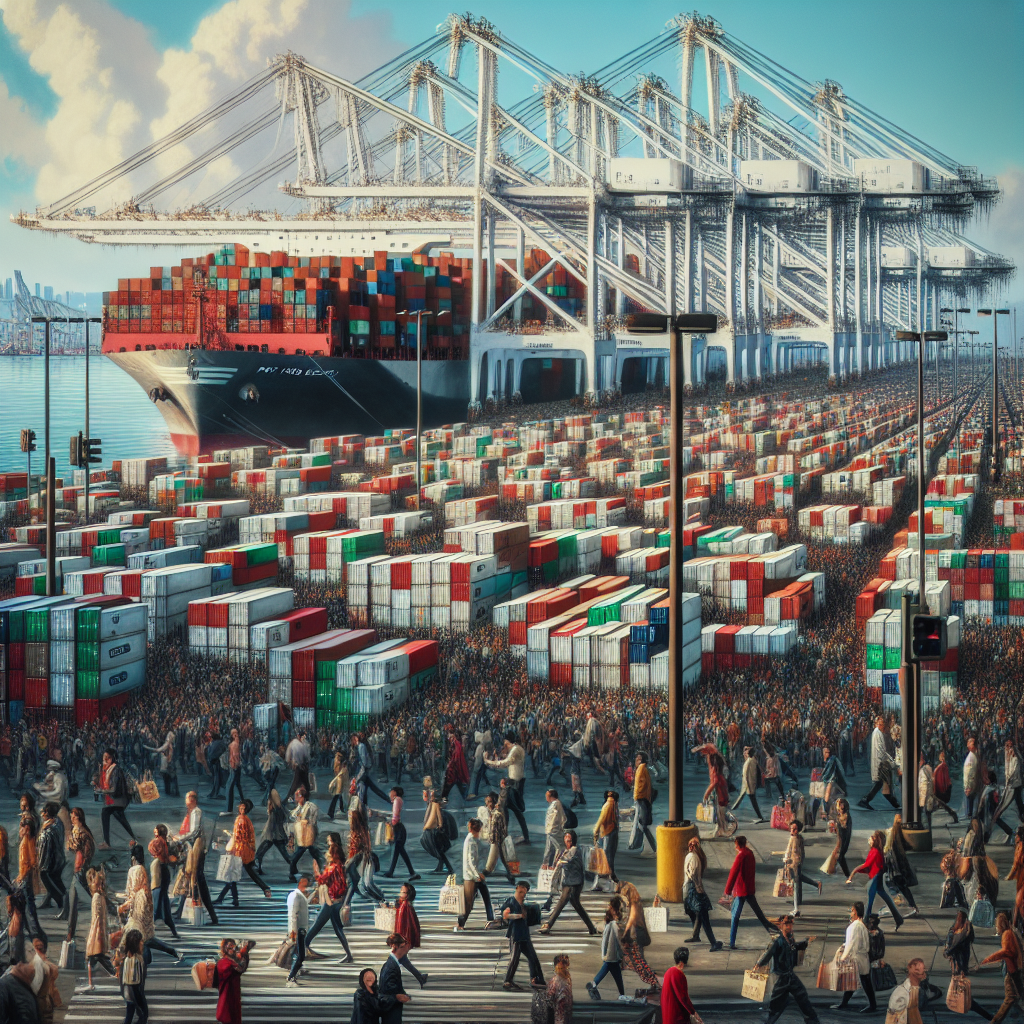As the holiday season approaches, enthusiasm for shopping among the public is on the rise. Officials at the Port of Long Beach, the second busiest port in the United States, announced on November 7 (Friday) that the port operations are running smoothly without any congestion. Despite facing challenges due to tariff policies, the current cargo volume is stable and showing growth, with expectations that the supply for the end-of-year shopping season will not be disrupted.
Since President Trump returned to the White House and engaged in discussions with various countries regarding tariff agreements, some people have expressed concerns about potential impacts on international trade and the possibility of shortages in the supply of goods.
Mario Cordero, the CEO of the Port of Long Beach, mentioned during a press conference on Friday that while the tariff policies have introduced uncertainty to the port, the cargo volume has not only not decreased but has exceeded the expectations set earlier this year.
He explained that this is due to importers, retailers, and other related businesses stockpiling goods months in advance, leading to a continuous surge in cargo volume at the port for several months. Before the implementation of tariffs in the spring and retaliatory tariffs, goods had already been shipped in advance and warehouses were filled.
In total, over the past 10 months, the Port of Long Beach has processed approximately 8.23 million standard shipping containers (TEUs), a 4.1% increase compared to the same period last year. However, port officials added that the volume of containers traveling to and from China has significantly decreased compared to a few years ago. With many manufacturing industries shifting to Southeast Asia, future trends in cargo volume are unpredictable.
Looking ahead to the upcoming holiday shopping season, Cordero anticipates that both businesses and consumers are prepared.
“By the end of the year, we expect the cargo volume at the Port of Long Beach to be roughly on par with last year’s record of 9.6 million tons,” he stated. These standard shipping containers contain various goods, such as 98,000 containers of winter clothing, 65,000 containing kitchen appliances like refrigerators, and 62,000 filled with plush toys produced in China. It is expected that these goods will sell well during the end-of-year holiday season.
“We anticipate significant sales on ‘Black Friday,’ but due to rising prices, consumers may be more cautious in their spending this year. This is generally reflected in a slight decrease in sales of gift items,” Cordero said. “As manufacturers, retailers, and other related businesses have already absorbed some costs and are working to minimize the impact of price increases on consumers, the effects on consumers have not been significant for the time being.”
However, as 2026 approaches, he believes that this situation may change. Nevertheless, American consumers continue to demonstrate strong resilience, with expectations from external sources that the U.S. GDP this year will surpass earlier projections.
Noel Hacegaba, the Chief Operating Officer of the Port of Long Beach, emphasized that despite importers transporting a large amount of goods in advance, the port has not experienced any congestion or disruptions.
“Even during the longest federal government shutdown in history, our port continued to operate smoothly, and goods were able to flow seamlessly throughout the entire U.S. supply chain,” he said.

